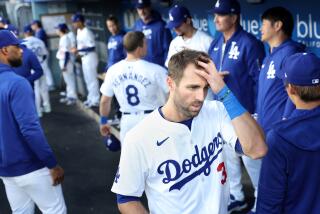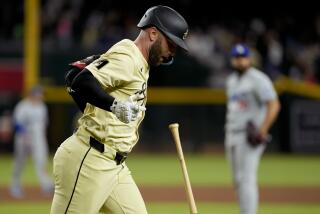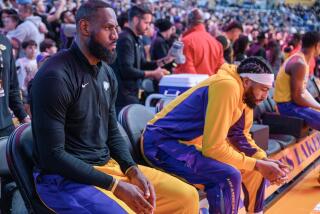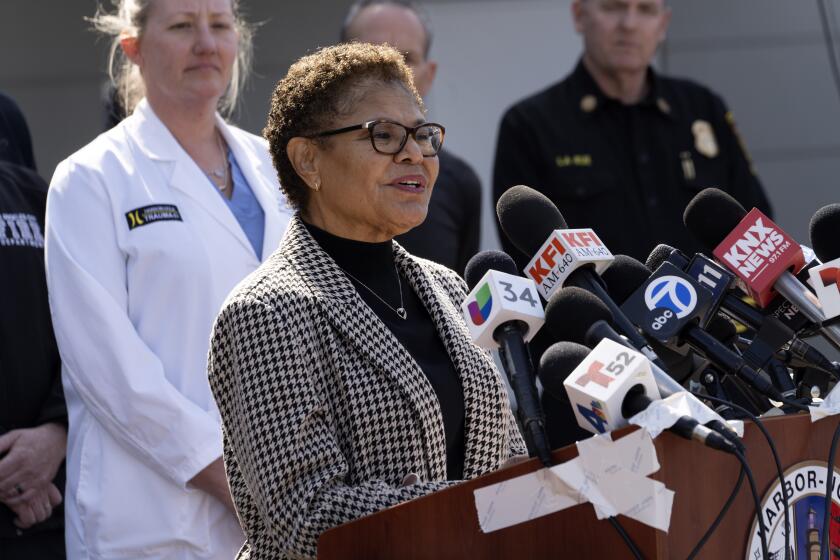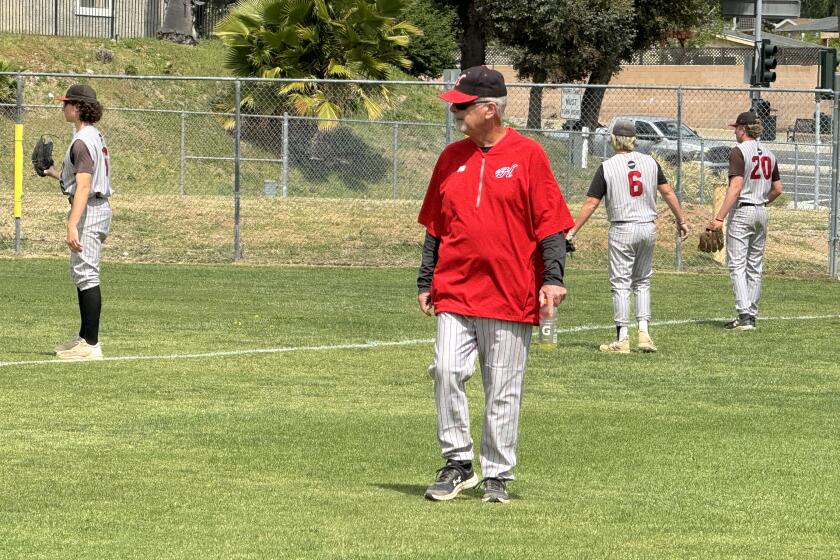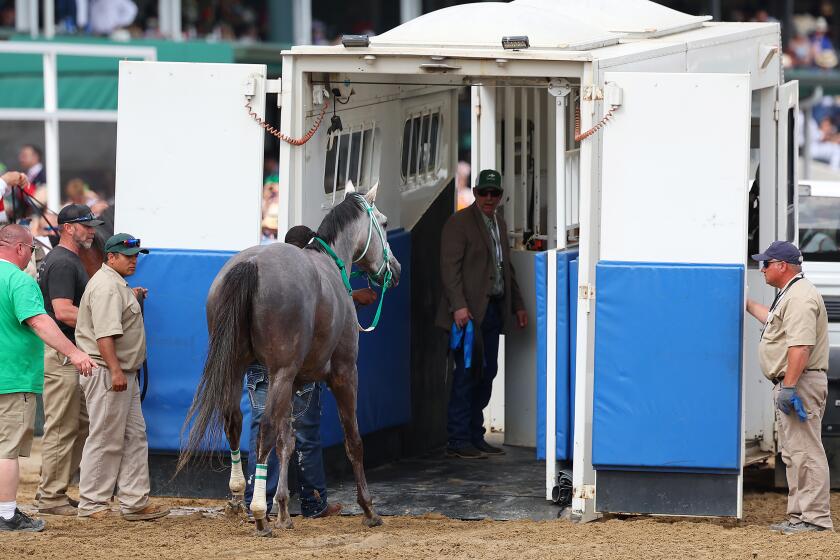After McEnroe’s Victory Comes a Shot in the Arm : Australian Open: He gets controversial intravenous rehydration treatment.
John McEnroe is the focus of another tennis controversy, but it has nothing to do with his game.
After a dramatic five-set, nearly five-hour victory on a surface on which temperatures reached 124 degrees, McEnroe used intravenous fluids to recover from possible dehydration.
The procedure, not unusual in American professional sports, was criticized by Australian medical authorities, who claimed the practice might give a player a competitive advantage.
Rehydration is the process of replenishing vital elements lost through sweating. The essential minerals and chemicals are commonly replaced by drinking specially mixed fluids. Sometimes, intravenous fluids are administered when a person is so nauseated he or she cannot hold down fluids.
According to a doctor and trainer who administered the IV to McEnroe, he had none of the signs that would necessitate intravenous rehydration.
The IV drip was requested by McEnroe and his coach, brother Patrick and manager, said trainer Rob Hanna of the Assn. of Tennis Professionals, the organization that governs Grand Slam events such as the Australian Open in Melbourne.
“He didn’t need to do it, but he did,” Hanna told the Associated Press. “He was not delirious. His vital signs were fine. He had it because of who he is.
“The Americans do it more, but there are risks associated with it. The players are using this like a quick fix.”
Hanna said the procedure carries the risk of infection in the arm where the needle is inserted into a vein, and possibly an air embolism that can lead to a stroke if the IV is administered improperly.
The Australian Open doctor, who agreed reluctantly to give McEnroe the IV, ultimately took responsibility for it, but expressed strong reservations about its use.
Still, many players, including Jimmy Connors at last summer’s U.S. and French opens, have replenished vital fluids intravenously.
Gary Wadler, a New York internist who has worked at the U.S. Open, called the assertion that the IV was unnecessary ridiculous. Wadler said it takes simple clinical judgment to determine whether to give fluids orally or intravenously.
“There is no controversy,” he said Sunday night. “Whether this is good medicine or bad medicine is not the right way to view this. It is what is right for the patient.”
Wadler said IVs are not used often in tennis, as compared to American football, but “we do do it. It is not a quick fix. By doing so, doctors can guarantee that the fluids will be absorbed into the blood.”
Wadler said there is little risk of infection if basic medical practices are followed. Peter Brukner, president of the Australian College of Sports Medicine, said in an interview that intravenous fluids are used only in medical emergencies in Australia.
The vital signs that would indicate such use include hyperthermia, pale, cold skin, an unstable mental state and abnormal pulse, blood pressure and temperature.
McEnroe, 32, had none of those, doctors said, but may have requested the IV as a preventive measure for muscle cramps and as a way to speed his recovery to train for his quarterfinal match, which will be held Wednesday.
Michael Chang, in a dramatic French Open match against Ivan Lendl three years ago, did not use intravenous fluids. He won despite cramping that left him unable to serve overhead.
Brukner, who handled some of the players competing in the Open, said doctors from his Olympic Park Sports Medicine Clinic tell athletes to acclimatize themselves before competing. He encourages athletes to take lots of fluids before engaging in serious physical activity, particularly on hots days.
McEnroe declined to discuss his treatment. “I want to keep it quiet in order to facilitate, hopefully, a victory on Wednesday (against Wayne Ferreira of South Africa),” he told the Associated Press. “Everything’s fine, though. I feel OK now. I feel like I’ll do what’s necessary to be ready.”
McEnroe upset Boris Becker in three sets Friday, but the temperatures were in the 70s, unusually cool for Melbourne during the summer. When McEnroe faced Emilio Sanchez of Spain 37 hours later, the temperatures had risen dramatically as dry, hot north winds blew into Melbourne.
At the Melbourne Tennis Center, the heat-absorbing Rebound Ace surface was scorching. After winning, McEnroe waved to the fans, embraced Sanchez at the net and then went to his chair. He suddenly fell to the ground, lying there for about a minute. Television commentators said he was joking.
Later Sunday, American Aaron Krickstein yielded to heat exhaustion and nausea, quitting against Amos Mansdorf of Israel.
On the changeover after the fifth game of the fifth set, Krickstein, 24, slumped into his chair and told the umpire he could not continue, accenting the importance of proper hydration in such conditions.
More to Read
Get our high school sports newsletter
Prep Rally is devoted to the SoCal high school sports experience, bringing you scores, stories and a behind-the-scenes look at what makes prep sports so popular.
You may occasionally receive promotional content from the Los Angeles Times.
